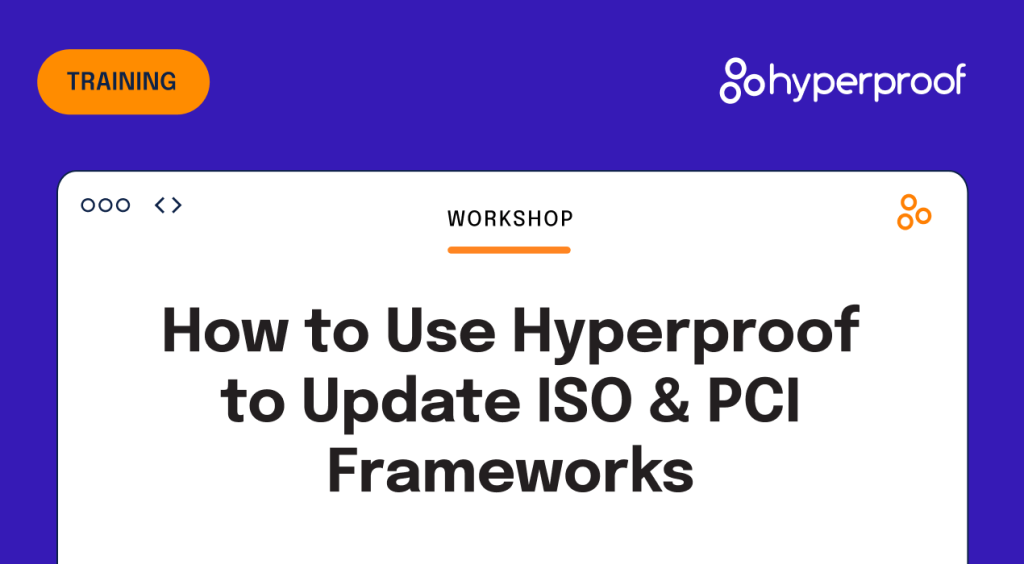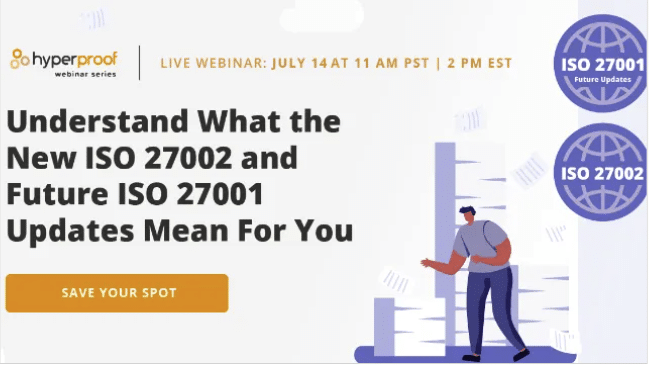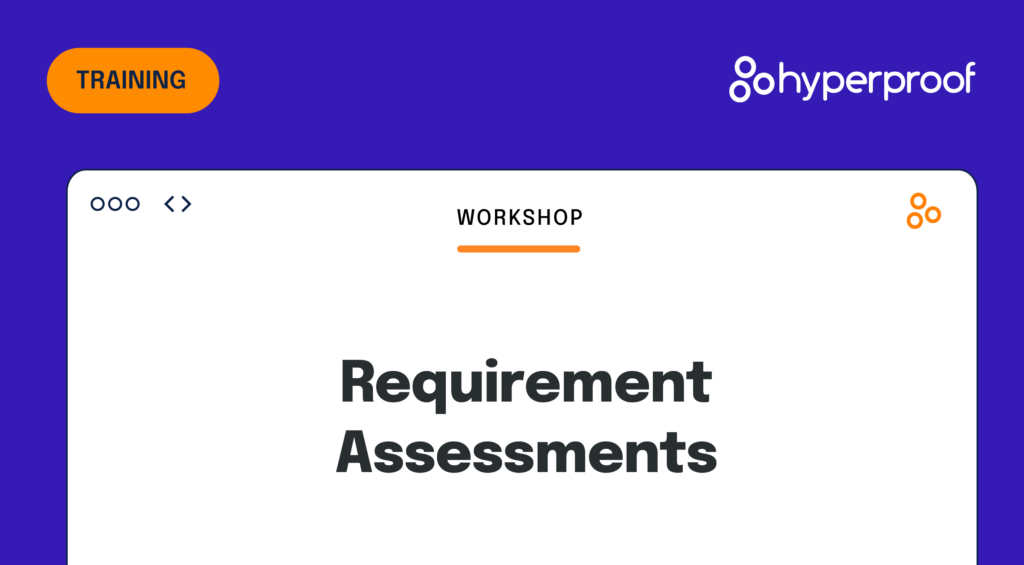How to Conduct a Gap Assessment (With Template)

When it comes to governance, risk, and compliance (GRC), do you know exactly where your weaknesses are? For any organization that adheres to complex GRC standards, it’s impossible to keep it all in your head. Even if you designate responsibilities to different team leaders, how can you verify they are aligned with your organization’s GRC game plan? You use a gap assessment, that’s how.
A gap assessment evaluates the difference between an organization’s current practices and a desired governance, risk, and compliance standard, like ISO 27001, NIST CSF, or other industry-specific benchmarks. Gap assessments provide a structured approach to identifying shortcomings in your governance and risk management efforts, ensuring compliance, reducing risk, and enhancing overall operational efficiency.
Let’s take a closer look at gap assessments, their benefits, who uses them, and how to use a gap assessment template to guide your GRC processes.
Benefits of gap assessments
Conducting a governance, risk management, and compliance gap assessment provides several key benefits for organizations. Here are some of the main reasons why:

1. Improved risk awareness and mitigation
A gap assessment helps organizations identify where their current practices fall short of industry standards or regulations, enabling them to better understand the risks they face. By highlighting vulnerabilities, the assessment allows you to proactively mitigate risks before they lead to serious incidents, such as data breaches or regulatory fines.
2. Enhanced compliance
Many industries are governed by strict regulatory standards (e.g., ISO 27001, PCI DSS, HIPAA). A gap assessment shows where the organization is non-compliant with such standards and helps implement necessary changes to meet these legal and regulatory requirements. This reduces the likelihood of penalties, fines, and legal complications.
3. Actionable insights for strategic decision-making
By thoroughly reviewing governance and risk management frameworks, a gap assessment provides clear, actionable insights that management can use to make informed decisions about resource allocation, investments in security, and process improvements. These insights are crucial for aligning security efforts with your business objectives.
4. Increased operational efficiency
The process of identifying gaps often reveals inefficiencies in workflows, resource use, and procedures. Addressing these inefficiencies through a gap assessment can streamline operations, enhance process management, and optimize the allocation of staff and technological resources.
5. Improved stakeholder confidence
When your organization conducts regular gap assessments, it demonstrates to stakeholders — customers, partners, and regulators — that you take governance, risk, and compliance seriously. This builds trust and can give your organization a competitive edge by showing your commitment to high standards.
6. Resilience and long-term planning
A gap assessment helps organizations not only address current risks but also form a plan for future threats and challenges. By closing gaps, organizations are better equipped to handle evolving risks, regulatory changes, and emerging cybersecurity threats. This leads to long-term resilience.
Who needs a GRC gap assessment?
GRC gap assessments are widely used across various types of organizations that require strong governance, risk management, and compliance structures. The specific industries and types of organizations that use gap assessments include:
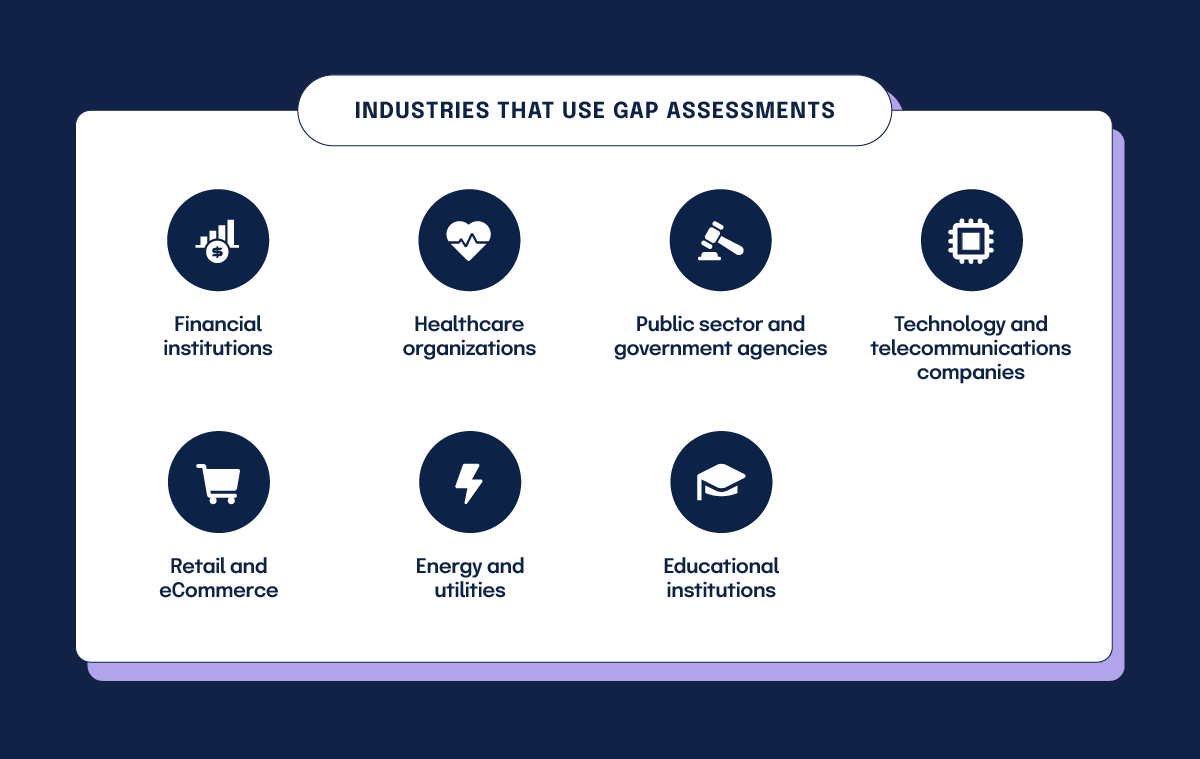
1. Financial services organizations
Banks, insurance companies, and other financial services organizations are heavily regulated and must comply with standards such as the FFIEC (Financial Institutions Examination Council), PCI DSS (Payment Card Industry Data Security Standard), and SOX (Sarbanes-Oxley Act). Gap assessments help these organizations ensure compliance with financial regulations and identify areas where they might be vulnerable to risk.
2. Healthcare organizations
Healthcare providers, hospitals, and medical research organizations use gap assessments to ensure compliance with regulations like HIPAA (Health Insurance Portability and Accountability Act). These assessments are crucial for managing patient data privacy, ensuring information security, and addressing any gaps in compliance with privacy laws.
Learn how Artemis by Nomi Health took on HITRUST with Hyperproof
3. Public sector and government agencies
Government bodies and public sector organizations conduct gap assessments to align their operations with frameworks such as NIST (National Institute of Standards and Technology) and other government-specific standards like FedRAMP (Federal Risk and Authorization Management Program). These assessments are critical for ensuring data protection, maintaining public trust, and meeting strict cybersecurity requirements.
4. Tech companies
Tech companies often use gap assessments to assess their security posture, data privacy practices, and adherence to cybersecurity frameworks like ISO 27001 or the NIST CSF. These assessments help protect customer data and ensure that internal processes meet the required standards.
Learn how Appian uses Hyperproof to streamline GRC for 28 frameworks
5. Retail and eCommerce
Retailers, especially those involved in online sales, rely on gap assessments to safeguard credit card and customer data under standards such as PCI DSS. The assessments help eCommerce companies prevent data breaches, comply with consumer protection laws, and improve payment processing security.
6. Energy and utilities
Energy companies, particularly those dealing with critical infrastructure, conduct gap assessments to ensure compliance with standards like ISO 27001 and NERC CIP (North American Electric Reliability Corporation Critical Infrastructure Protection) and to manage operational risks.
7. Educational institutions
Universities and research institutions may conduct gap assessments to comply with privacy regulations (like FERPA — Family Educational Rights and Privacy Act) and manage risks related to the storage of personal and sensitive research data.
See how Strada Education Network uses Hyperproof to reduce time spent on evidence collection by 50%
What is a gap assessment template?
A gap assessment template is a structured document (typically a spreadsheet) used to compare an organization’s current GRC practices against a desired standard or framework. The template helps you visualize areas where your company falls short and needs to implement improvements. It highlights the “gaps” between the current state and the desired future state.
ISO 27001 gap assessment template
Our free template helps you understand at a glance how a gap assessment works. It covers a broad range of control categories and essential elements for conducting a thorough assessment. Here’s a breakdown of the template contents:
Framework selection
A clear designation of the GRC framework being used as a benchmark (e.g., NIST CSF, ISO 27001, COBIT). In the case of this template, we are using ISO 27001 as a benchmark.
Control categories
The template includes 14 key control areas outlined in ISO 27001, such as Information Security Policies, Asset Management, Access Control, Physical and Environmental Security, and Incident Management. These are core areas of information security and risk management essential for compliance with ISO 27001.
Current state assessment
The template includes columns to evaluate the current implementation status of each control, including details like existing procedures, tools, and responsible parties. Each control category is assessed in terms of its current implementation and the ideal state. This gives you a clear view of the organization’s maturity level and what is needed to align with ISO 27001 standards.
Desired state
A description of the ideal level of control implementation based on the chosen framework.
Gap analysis
This is the heart of the document. It identifies discrepancies between the current and desired states, providing a detailed analysis of the specific areas where improvements are needed.
Action plan
The template provides a place to outline actions needed to close the identified gaps, including tasks, responsible parties, and timelines, helping to guide remediation efforts in a structured manner.
Responsible parties and timelines
These sections specify who is responsible for each task and provide an estimated timeline, making the template actionable and practical for real-world use.
Priority (high, medium, low)
The template comes with an area to mark tasks as high, medium, or low priority.
- High: Critical actions that need immediate attention due to their significant impact on compliance and risk.
- Medium: Important tasks that should be addressed in the near future but are not as urgent as high-priority items.
- Low: Tasks that are necessary but can be scheduled for later implementation.
Start date
The template includes an area to mark the date of when the action plan is kicked off and tracking for issues and tasks.
How to use the template
1. Assess each control category
- Review the current state and desired state for each control category.
- Perform a gap analysis to identify discrepancies between the current and desired states.
2. Develop an action plan
- Outline specific actions required to bridge each gap.
- Assign each action to a responsible party and set a timeline for completion.
3. Prioritize tasks
- Assign a priority level to each action based on its importance and urgency.
4. Track progress
- Set a starting date for each task to initiate the action plan.
- Update the status column regularly to reflect the progress of each task.
5. Monitor and review
- Regularly review the template to ensure all gaps are being addressed.
- Adjust priorities and timelines as necessary based on organizational changes or emerging risks.
Additional tips when conducting a gap assessment
Get granular
While the template covers high-level control categories, more granular controls (e.g., specific sub-controls in Annex A of ISO 27001) could be added for deeper assessment.
Customize the gap assessment template to your needs
Tailor the template to fit the specific needs and context of your organization. You may add more control categories or modify existing ones based on your risk profile. For example, certain organizations may emphasize physical security, cloud security, or vendor management.
Collaborate with others
Ensure that all responsible parties are aware of their tasks and understand their roles in the remediation process.
Regularly update the template
Keep the template updated to reflect the latest status of each action plan, ensuring transparency and accountability.
Integrate the template with a compliance tool
Consider integrating this template with an advanced compliance tool for enhanced tracking and reporting. Adding integration points for real-time monitoring or automated tracking could improve the ongoing management of the action plan.
Download our free ISO 27001 gap assessment template

How Hyperproof can make your gap assessment faster and easier
We’ve provided a free downloadable tool for you to manually manage your gap assessment yourself, but there are better, more efficient ways to manage gap assessments. Hyperproof is designed to streamline compliance operations, risk management, and audit processes. This makes us incredibly well-suited for conducting gap assessments in the context of governance, risk, and compliance (GRC). Hyperproof provides an intuitive, easy-to-use Assessment module for assessors, compliance advisory firms, and internal audit/compliance teams to automate the workaround gap assessments and manage them in a central place.
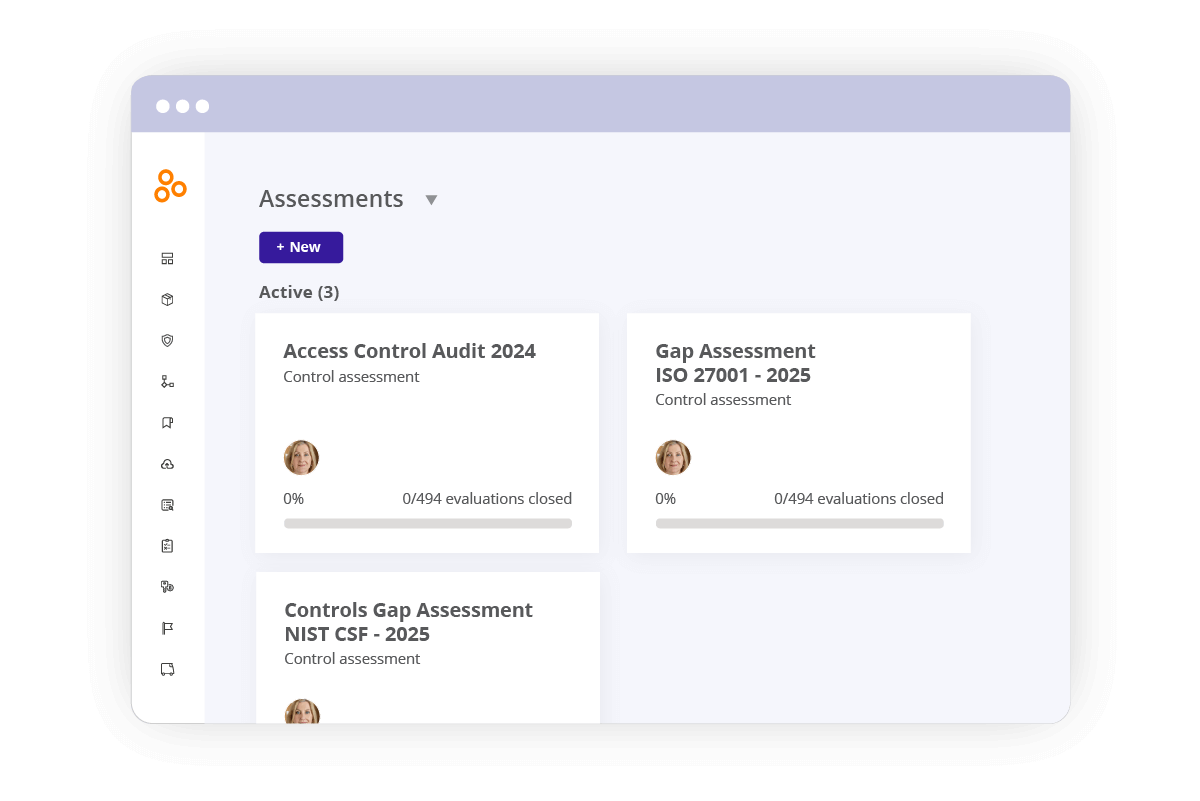
Hyperproof supports two distinct types of assessments:
Requirements gap assessments
A requirements gap assessment involves a thorough review of your company’s current compliance status against a desired state. This type of assessment identifies areas and controls that are failing specific parameters defined by the ideal state. This practice sets the course for corrective action and realignment with compliance requirements.
For instance, if your organization wants to be a DoD contractor, it will need to engage with a qualified Assessor to evaluate how its current state relates to the cybersecurity requirements outlined in CMMC (Cybersecurity Maturity Model Certification).
Controls assessments
A controls gap assessment evaluates the design or operating effectiveness of your controls. For example, if your organization needs to comply with SOX, you’ll need to assess your bank reconciliation controls on a cadence to check whether they are designed to prevent or detect and correct a material misstatement. Key considerations include: Does your employed bookkeeper receive bank statements unopened? Is there evidence that the organization limits who has access to the online banking account?
Regardless of the type of assessment you need to conduct, the setup process in Hyperproof is simple:
1. Select Assessments in the sidebar and click +New at the top of the page.

2. Select the assessment type (controls vs. requirements). For a gap assessment, you’ll want to select Requirement assessment.
Tip: You can start from scratch or duplicate an existing assessment to get a jumpstart.
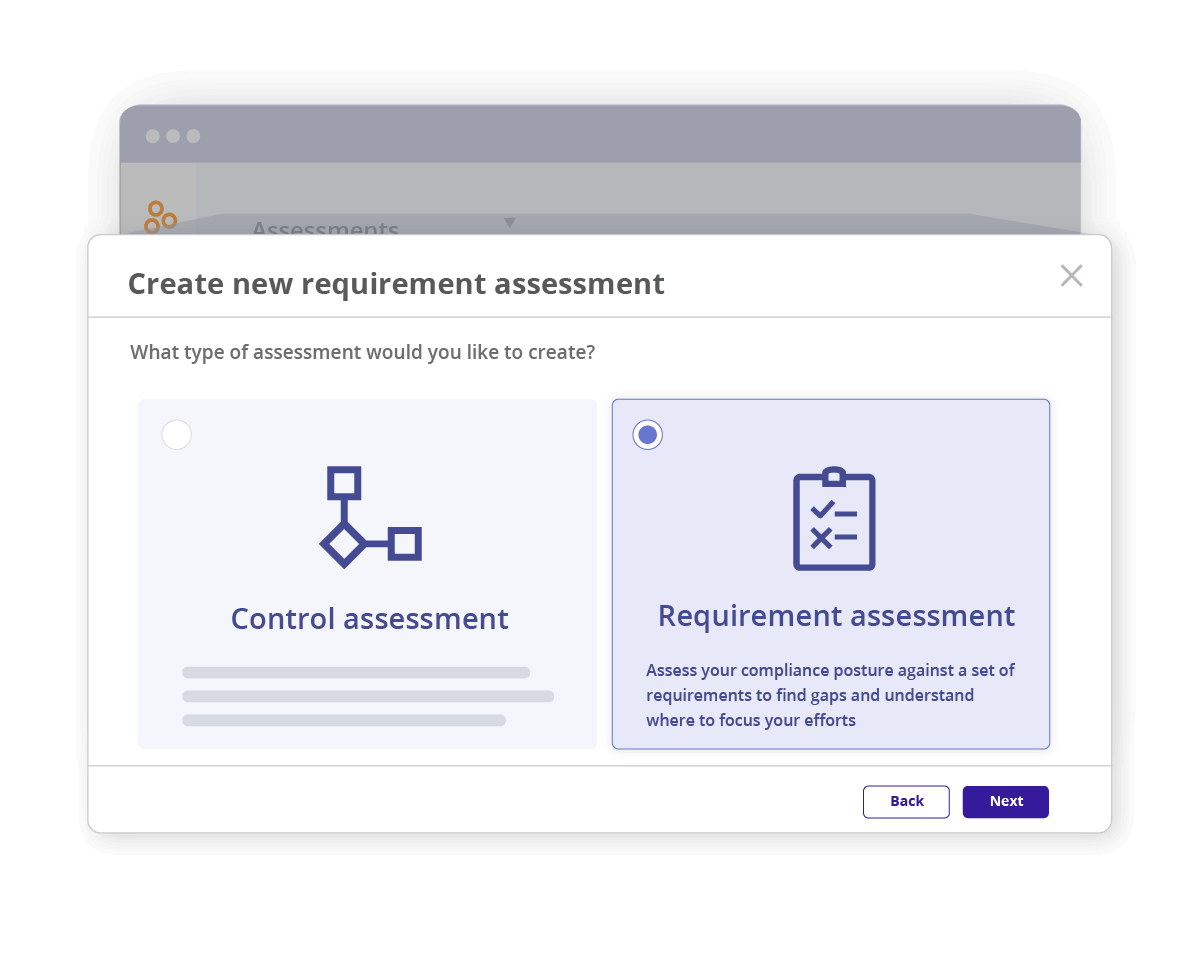
3. Give the assessment a name and a description.
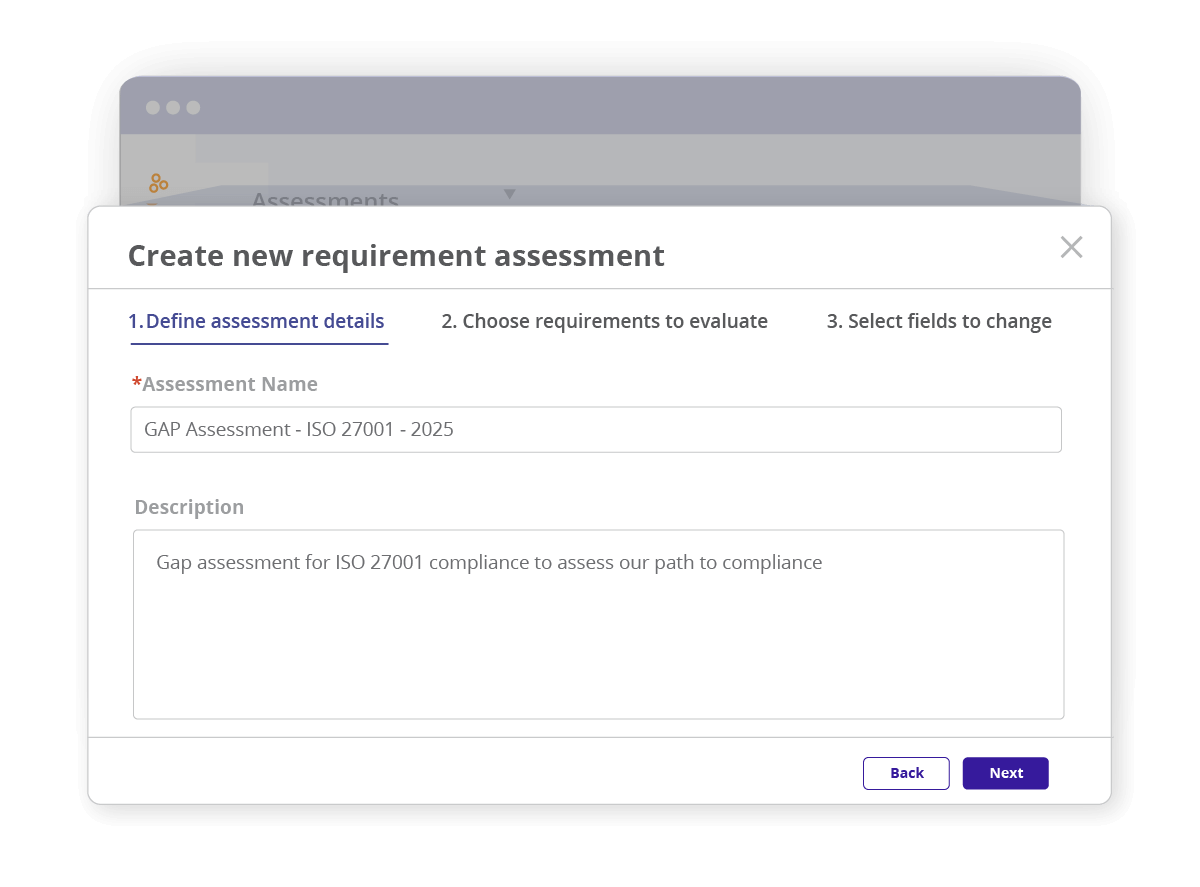
4. Choose the requirements or controls to evaluate. Hyperproof makes it easy for you to choose the subset you want based on criteria such as domain(s), compliance program, and control health and testing status.
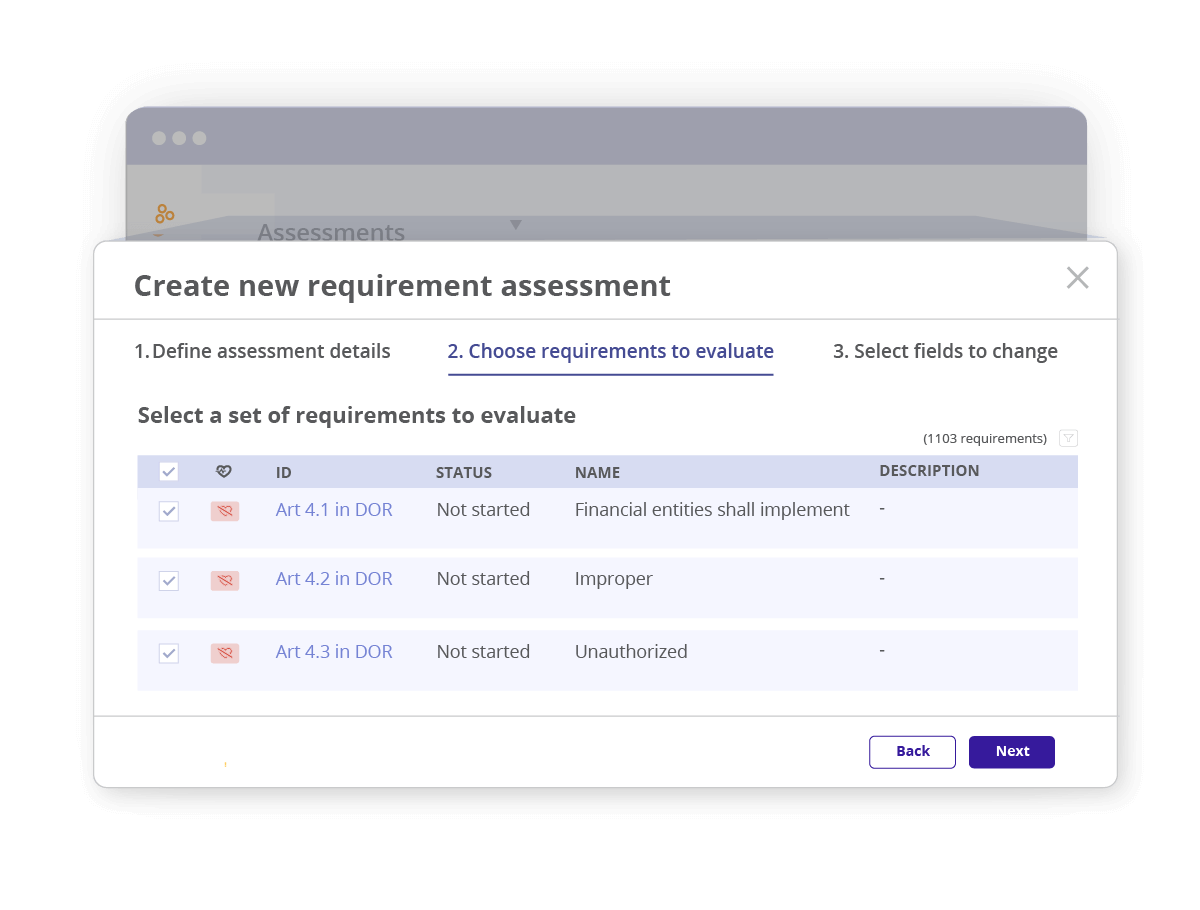
5. Choose the specific fields you would like to update in this evaluation. Set up your preferred evaluation rubric. Once these fields are selected, you can update them during an assessment, and the changes will be automatically reflected in the items (requirements or controls) you are evaluating.
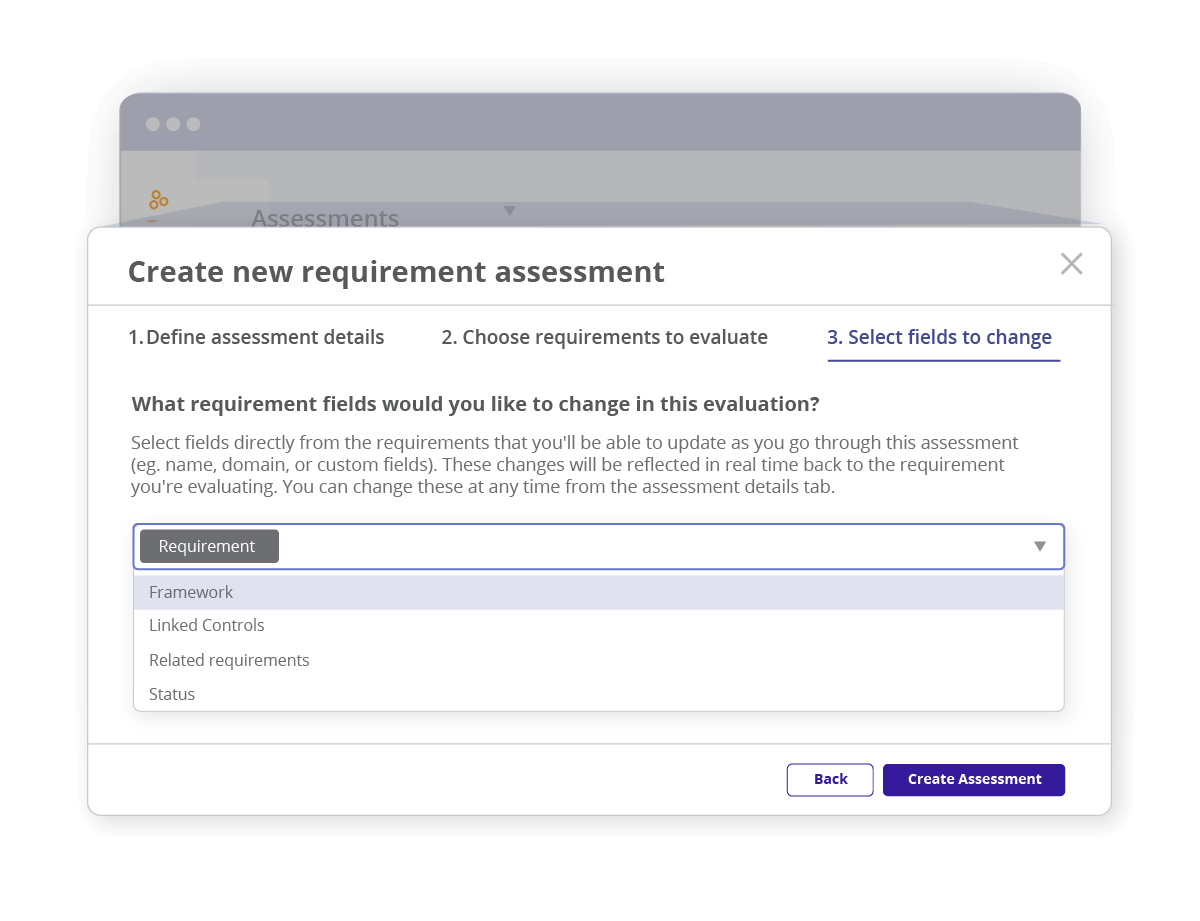
7. Click Create assessment. You’ll see a confirmation message showing your assessment has been successfully created. Click Go to assessment to view your new assessment dashboard.
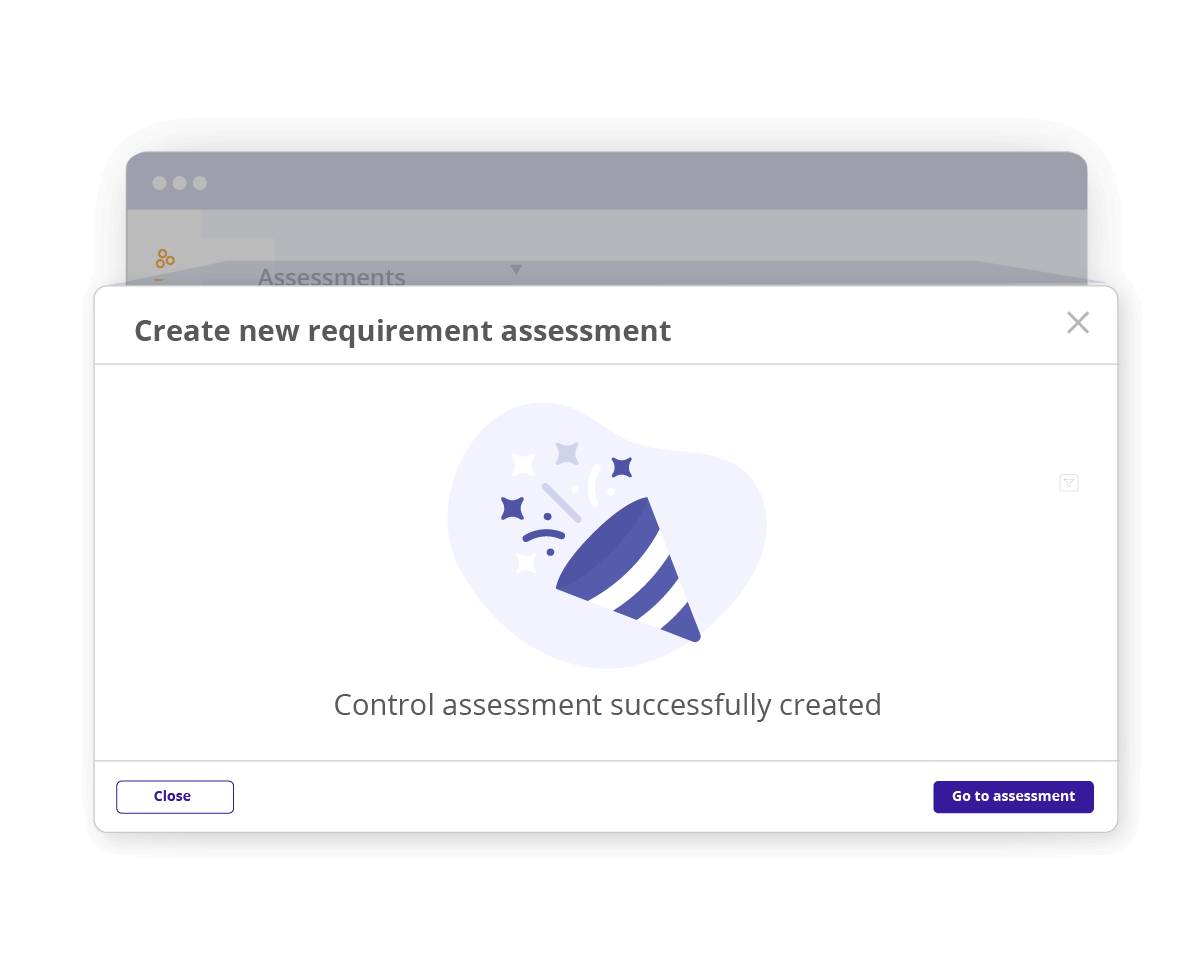
Here, you can add a timeline, view your evaluation status, and get a summary of the actions you need to take.
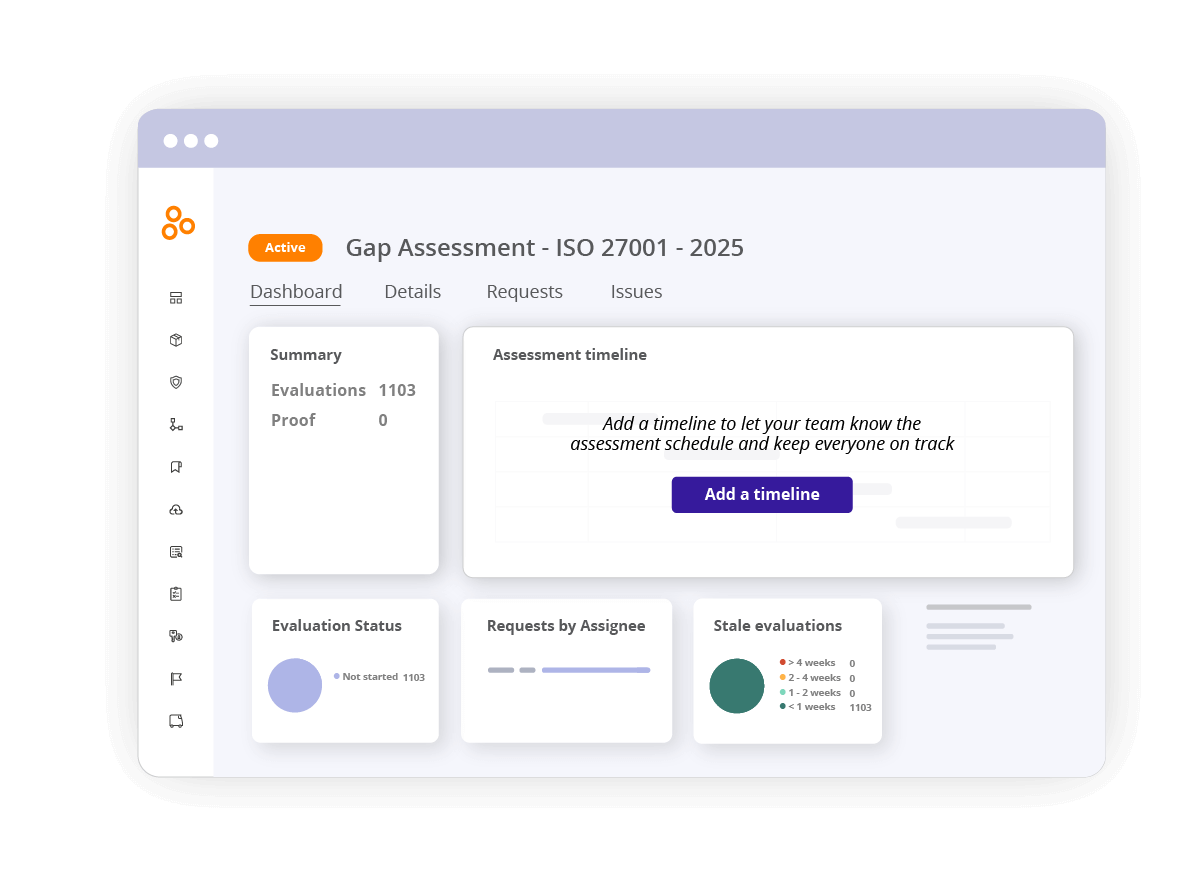
Assessment actions available
Hyperproof provides all the tools and actions you need to complete each assessment and document the findings. User actions available include:
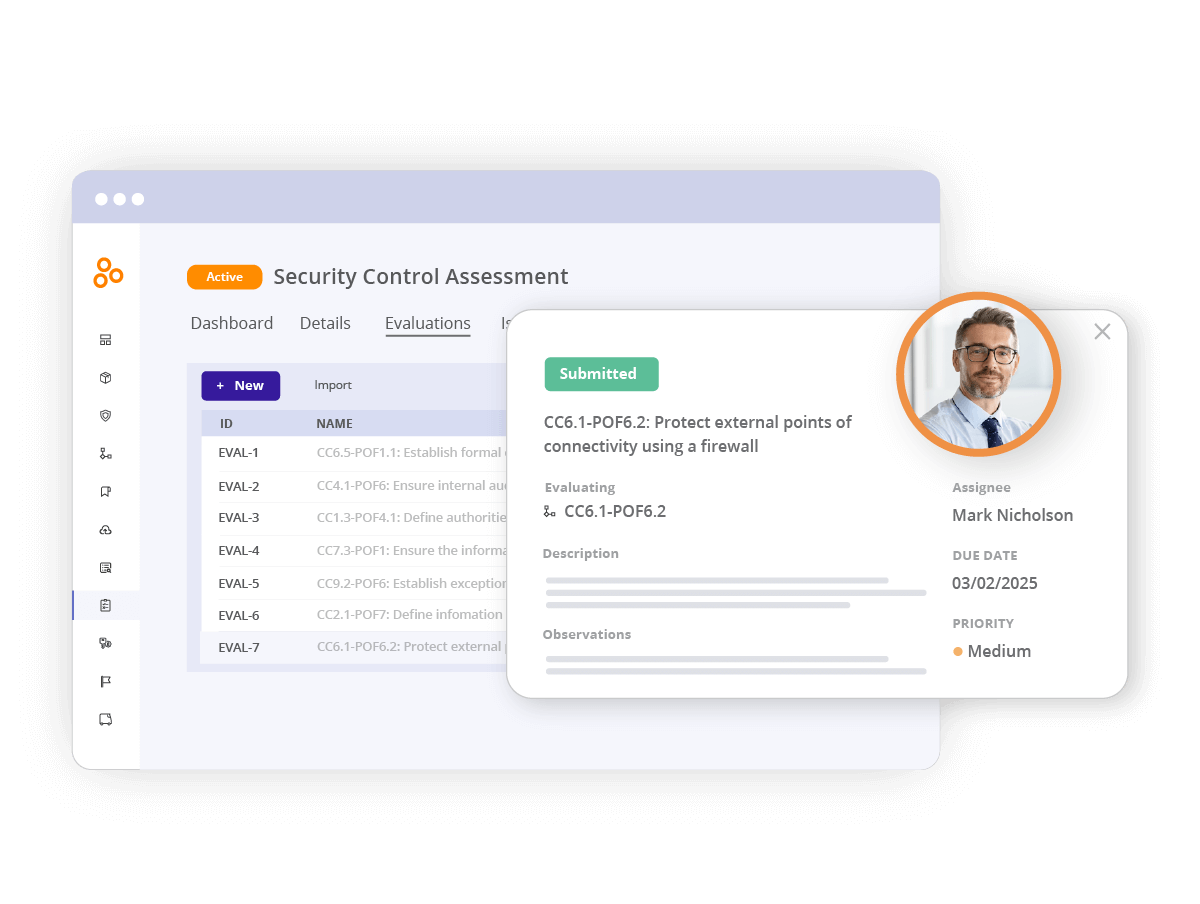
- Adding users to evaluate specific items
- Documenting findings directly on each item
- Linking related objects on an item
- Creating tasks
- Adding issues
- Adding proof
- Sharing an assessment report with stakeholders as a Word Doc
With Hyperproof, assessments can be efficiently managed, making the process less stressful and more manageable for assessors, compliance advisory firms, and internal audit/compliance teams.
Fill the gap faster
GRC gap assessments offer a systematic method for pinpointing weaknesses in your governance, risk management, and compliance initiatives. These assessments help organizations ensure they are adhering to regulatory requirements, manage risks effectively, and optimize operational processes for greater efficiency.
Hyperproof helps you conduct and manage gap assessments by providing pre-built templates, centralized control management, automated tracking, collaborative tools, risk management integration, and continuous monitoring. Our platform simplifies the gap analysis process, ensuring that you can efficiently identify and close gaps while staying audit-ready and compliant with relevant standards.
See Hyperproof in Action
Related Resources
Ready to see
Hyperproof in action?






